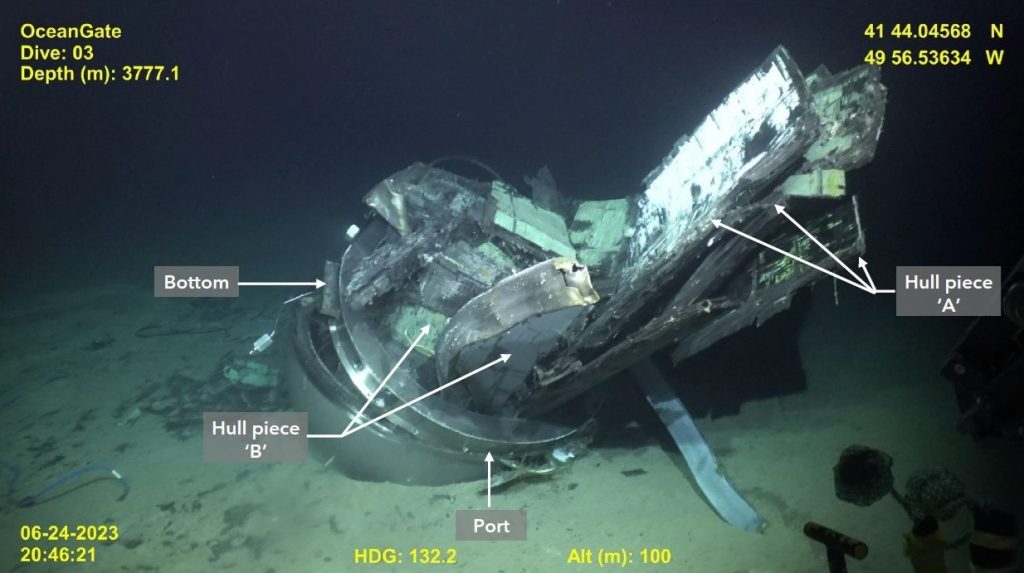The National Transportation Safety Board (NTSB) conducted an investigation into the catastrophic implosion of OceanGate’s Titan submersible during a trip to the Titanic wreck in the North Atlantic. The investigation found evidence of imperfections in the carbon-fiber hull of the sub, as well as indications that the hull behaved differently after a loud bang was heard during a dive in mid-2022. The findings were presented by senior materials engineer Donald Kramer at a Coast Guard hearing in South Carolina, where he refrained from speculating on the connection between the imperfections or the bang and the sub’s failure.
The crew members lost in the tragedy included OceanGate CEO Stockton Rush, veteran Titanic explorer P.H. Nargeolet, British aviation executive and adventurer Hamish Harding, and Pakistani-born business executive Shahzada Dawood and his son Suleman. The NTSB based its reports on debris from the seafloor and carbon-fiber samples from OceanGate’s hull. Two hulls were fabricated for the Titan sub, with the first one being used for test dives in the Bahamas and scrapped due to a crack. The NTSB examined samples from subscale test hulls as well as the surplus pieces from Titan’s second hull, which showed anomalies in the composite and adhesive joints.
In addition to studying the carbon-fiber hull samples, the NTSB analyzed data from acoustic and strain gauge sensors mounted in the hull. Data from a notable dive to the Titanic in July 2022 revealed a loud bang at the end of the dive, which raised concerns among the OceanGate team members. The sensor data showed significant differences in strain readings before and after the bang occurred in a specific section of the hull. Kramer emphasized ongoing tests and analysis of the results, without drawing causal connections between the implosion and the issues detailed in the reports.
During the hearing, William Kohnen of Hydrospace Group discussed his concerns about the Titan sub’s viewport, which was not rated for the depth of the Titanic wreck. Kohnen had suggested OceanGate obtain a better window for the sub, but the advice was not taken. Bart Kemper of Kemper Engineering Services outlined potential failure modes involving the carbon-fiber hull, bond between the hull and titanium end caps, and the sub’s acrylic viewport. He criticized OceanGate’s engineering approach and recommended limits on crew members for experimental crafts.
The investigative board, chaired by Jason Neubauer, will produce separate reports on the causes of the Titan tragedy and provide recommendations for regulatory changes to prevent such incidents in the future. Kohnen recalled a draft letter he had written in 2018 questioning OceanGate’s practices, which was not issued by the Marine Technology Society. He expressed concerns about Rush’s reluctance to have the Titan sub certified by external experts and emphasized the need for a standardized minimum standard for submersibles set by the Coast Guard and the submersible community.


